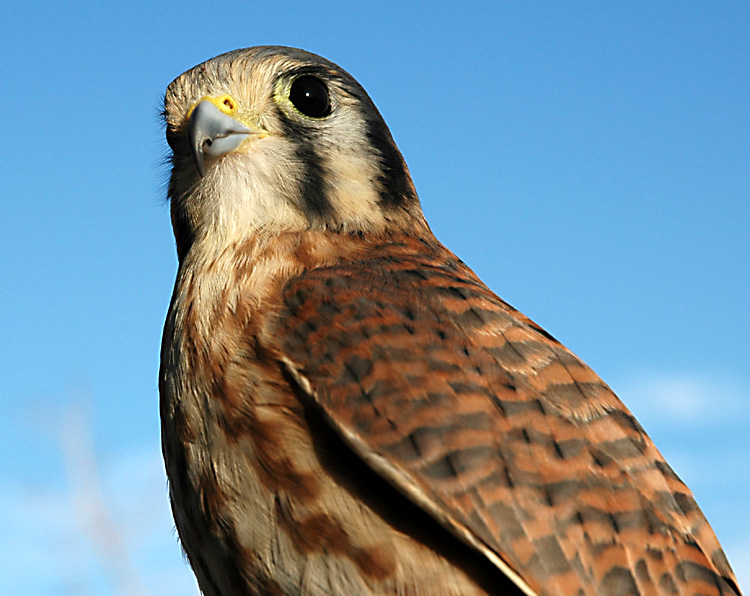
The Merlin has a body length of 10 - 13 inches, a wingspan
of 20 - 26 inches, and weighs 5 - 8 1/2 ounces.
Merlins inhabit boreal forests, coastal forests, prairies
and shrub-steppes of North America and Eurasia from sea-level to tree line.
Small to medium birds are the staple foods for Merlins, but they will also hunt bats, insects, and small rodents.
This falcon usually catches prey in the air after a swoop from
a perch or while flying low over the ground.
The prey is sometimes captured after a speedy pursuit.
Uneaten prey may be hidden for later consumption.
These falcons use old stick nests from crows, magpies, and hawks, or cliff ledges and natural cavities.
The female lays 3 - 6 eggs that are incubated for 27 - 32 days.
The young fledge 1 month later.
Merlins are able to breed at 1 year of age.
The scientific name comes from the Latin words falco, meaning hook-shaped (falcate) and may refer to the beak or claws, and columbarius, pertaining to pigeons.
The common name may have been derived from the Latin word merula, meaning a black bird. Merlins are also known as Pigeon Hawks, Bullet Hawk, Black Pigeon Hawk, Richardson’s Pigeon Hawk, and Suckley’s Pigeon Hawk.
FACTS:
-The color of the Merlin’s plumage is slightly different between the two sexes.
The slate blue color of the male is brighter and more contrasting than the female’s uniformly drab brown color.
- In the sport of falconry during the Middle Ages, the Merlin was flown in spectacular ringing flights in pursuit of Skylarks by the ladies of the court.
Falconers call the male Merlin a jack.









